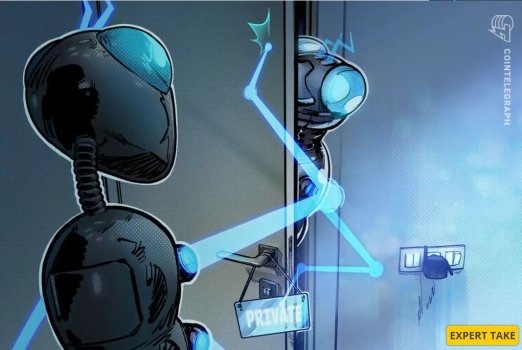Some people think that permissioned distributed ledger technology can perform better than open blockchain because it is tweaked to address the issues of the latter. Such systems are also called “permissioned blockchain,” as if blockchain is a high-level concept and “permissioned” is one of its variants. But this statement is controversial and down below, you will come to understand why.
Is “permissioned” decentralized?
There are a lot of other options to choose from in DLTs: permissioned, private, enterprise, federated DLT, etc. And frankly, sometimes, it is not easy to distinguish between them. Therefore, for this level of discussion, let us compare just DLTs vs. blockchain.
A permissioned DLT and the mentioned variety thereof are not decentralized. There should not be any fallacy around this, as it might be fatal for a project. While some opponents to this statement might claim that decentralization can have a degree, and of course, permission less blockchain is more decentralized.
Let us put it simply. If there is someone between two counterparties in a transaction, and you can do nothing about this, it is centralized. In a public blockchain, if an ordinary user does not want to rely on a miner for their transaction to be included in a block, they can draft their transaction, and mine a block themselves. If the block is valid, the network will accept it. Of course, mining nowadays requires enormous computational resources, but there are no technical or formal barriers to it — you don’t need to seek permission to mine. In DLT, users of the network have different roles and authority, and ordinary users are not able to create and validate blocks. There is nothing wrong with having a centralized system; it is just a matter of understanding what you are dealing with.
Continue reading: https://cointelegraph.com/news/private-distributed-ledger-technology-or-public-blockchain
Is “permissioned” decentralized?
There are a lot of other options to choose from in DLTs: permissioned, private, enterprise, federated DLT, etc. And frankly, sometimes, it is not easy to distinguish between them. Therefore, for this level of discussion, let us compare just DLTs vs. blockchain.
A permissioned DLT and the mentioned variety thereof are not decentralized. There should not be any fallacy around this, as it might be fatal for a project. While some opponents to this statement might claim that decentralization can have a degree, and of course, permission less blockchain is more decentralized.
Let us put it simply. If there is someone between two counterparties in a transaction, and you can do nothing about this, it is centralized. In a public blockchain, if an ordinary user does not want to rely on a miner for their transaction to be included in a block, they can draft their transaction, and mine a block themselves. If the block is valid, the network will accept it. Of course, mining nowadays requires enormous computational resources, but there are no technical or formal barriers to it — you don’t need to seek permission to mine. In DLT, users of the network have different roles and authority, and ordinary users are not able to create and validate blocks. There is nothing wrong with having a centralized system; it is just a matter of understanding what you are dealing with.
Continue reading: https://cointelegraph.com/news/private-distributed-ledger-technology-or-public-blockchain

